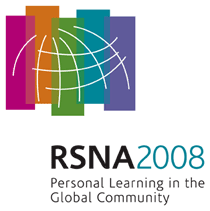
Abstract Archives of the RSNA, 2008
Michael Scott-Joon Eaton MD, Presenter: Nothing to Disclose
Michele Kovas BS, Abstract Co-Author: Nothing to Disclose
Uttam Sinha MD, Abstract Co-Author: Nothing to Disclose
Parvesh Kumar MD, Abstract Co-Author: Nothing to Disclose
To conduct a retrospective review of comprehensive Re-RT of recurrent H/N cancer patients treated at USC.
Between 2003 and 2007, 18 patients underwent Re-RT for recurrent H/N cancer. Sites included the larynx (n=4), oropharynx (n=4), oral cavity (n=4), and other (n=4) with the exclusion of nasopharynx. Unlike other published reports of head and neck Re-RT, patients Re-RT at USC received comprehensive (elective nodal radiation) hyperfractionated radiation [at 110 - 120 cGy/fx BID with at least a 6 hour interval to total dose of 7680 - 7700 cGy] with no planned treatment breaks. All patients were treated with 3D conformal RT encompassing the CTV and adjacent lymphatic nodal drainage areas at risk for micrometastases. 25% of the patients were treated with palliative intent. The median dose of previous radiation prior to Re-RT was 6680cGy (range 5040 - 7200cGy). The median interval from the previous course of radiation therapy was 17 months (range 6 - 83). Only two patients received concurrent chemotherapy with Re-RT (Cisplatin in 1 patient and erbitux in another).
The median Re-RT dose was 7020cGy (range 3240cGy - 7680cGy). The median duration of treatment was 47 days, and the median number of break days was 3 (range 2-15). Nine (50%) of the 18 patients completed their planned HFx Re-RT without any treatment related breaks. Three patients required a treatment related break of 5 days or less, while 2 patients needed a treatment related break of more than 5 days (1 due to mucositis and the other one due to infection). Three patients required PEG placement necessitating missing more than 5 days of treatment while 1 patient was non-compliant for more than a week. Major acute toxicities consisted of grade 3 mucositis in 17% of patients and grade 3 skin desquamation in 28%. At a median follow up interval of 6 months (range of 2 - 25), the median overall survival after Re-RT is 6 months (range 2 - 25). Two patients died with no evidence of disease secondary to a heart attack and recreational drug use. Two patients are currently alive at follow up interval of 25 and 9 months since Re-RT. Six patients died secondary to metastatic disease and 4 more patients chose hospice after completing palliative Re-RT. Only 4 patients who were treated with curative intent experienced documented local failure.
Comprehensive HFx Re-RT with no planned treatment breaks is feasible and tolerable in the majority of our patients. Based upon our institutional experience, we plan to initiate a phase I/II trial exploring comprehensive Re-RT in patients with recurrent H/N cancer.
Eaton, M,
Kovas, M,
Sinha, U,
Kumar, P,
Comprehensive Hyperfractionated (HFx) Re-Irradiation (Re-RT) of Recurrent Head and Neck (H/N) Cancer Is Feasible: A Retrospective Review of the University of Southern California (USC) Experience. Radiological Society of North America 2008 Scientific Assembly and Annual Meeting, February 18 - February 20, 2008 ,Chicago IL.
http://archive.rsna.org/2008/7001908.html

